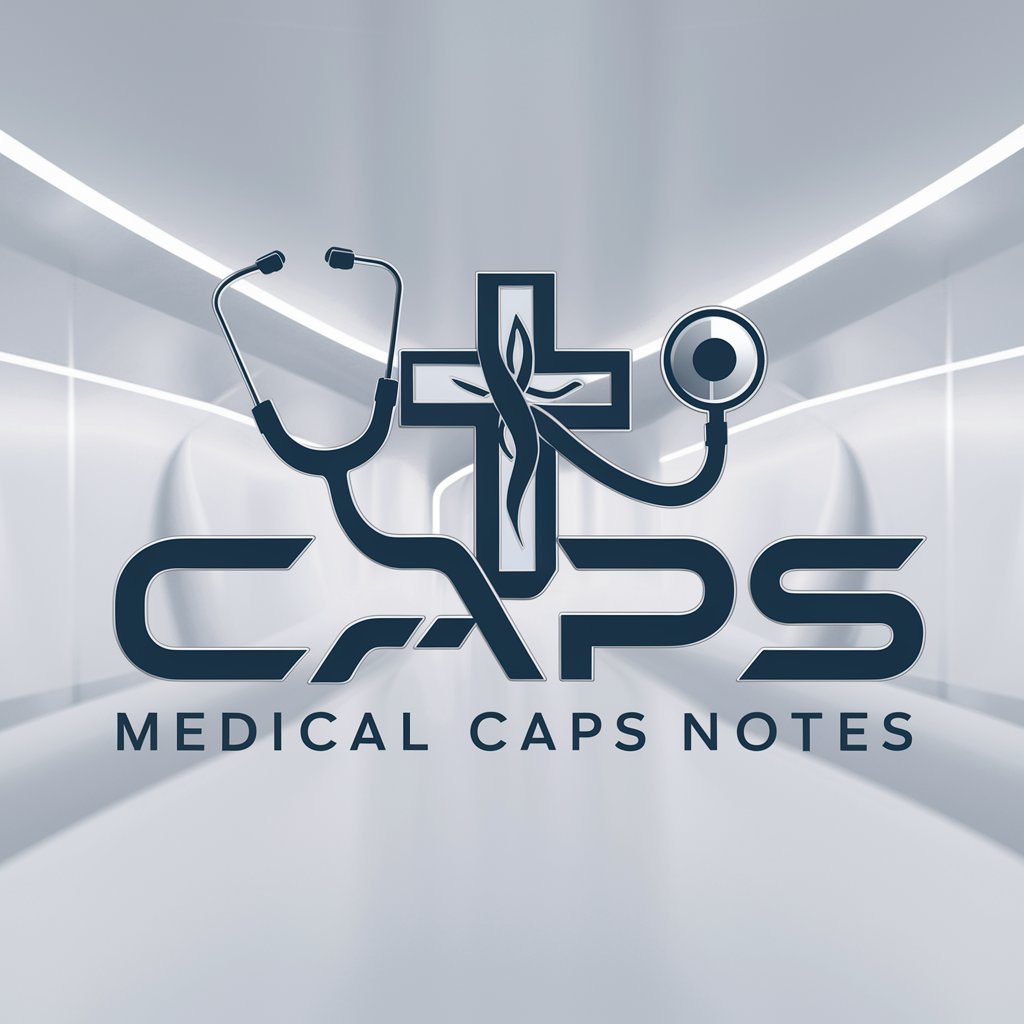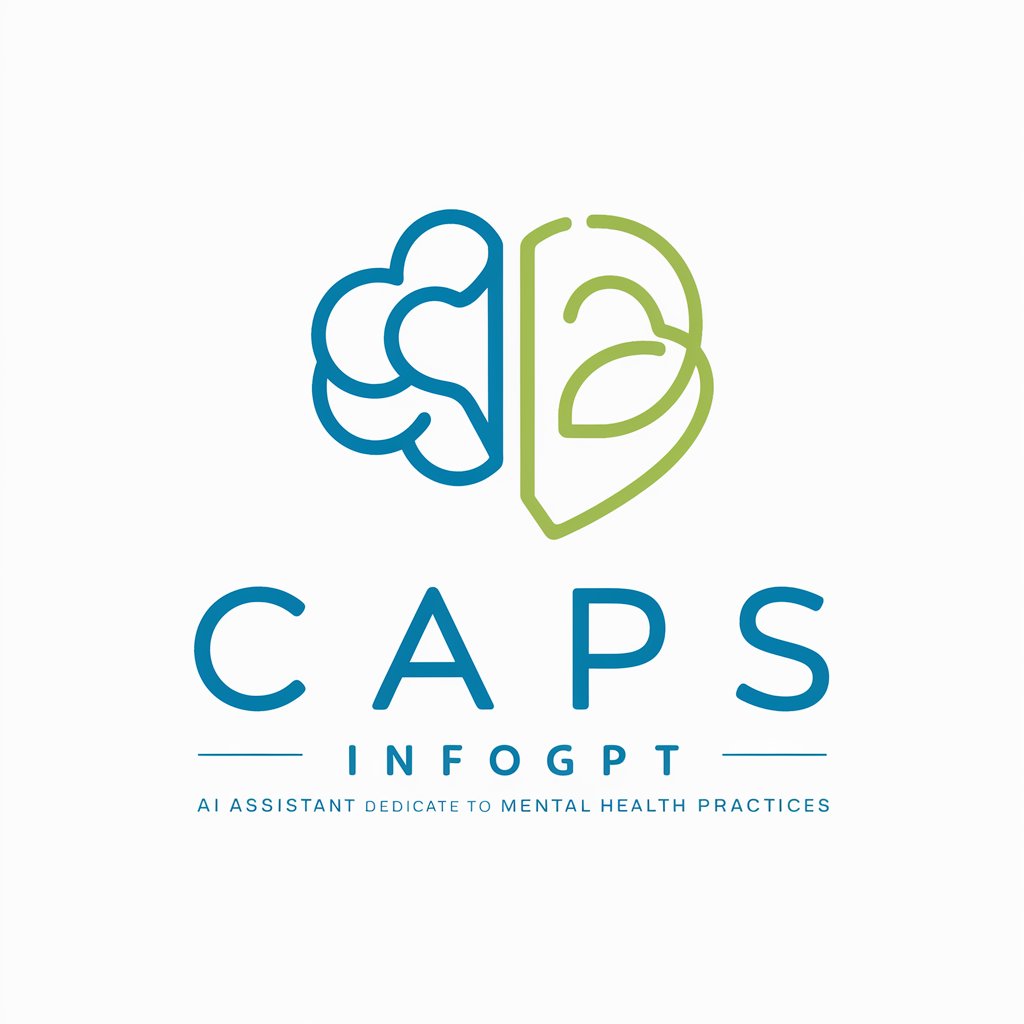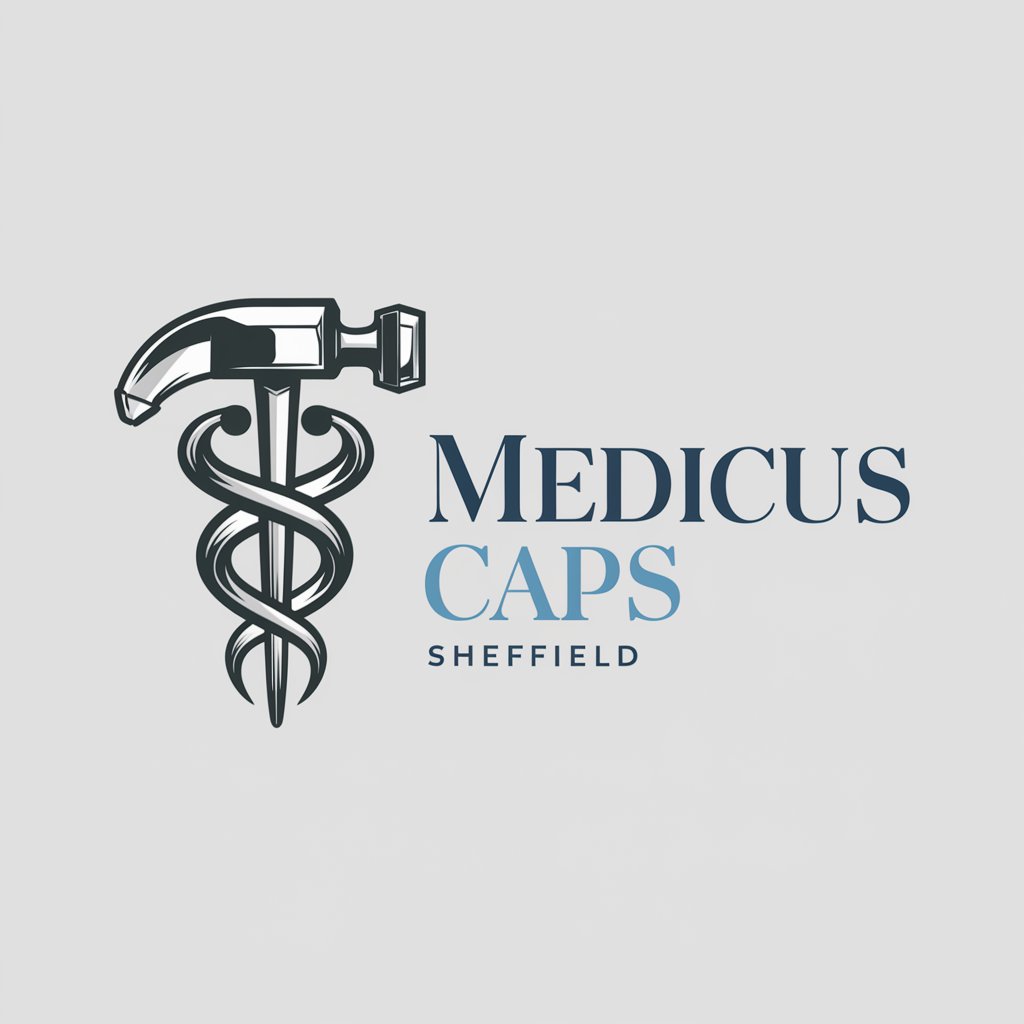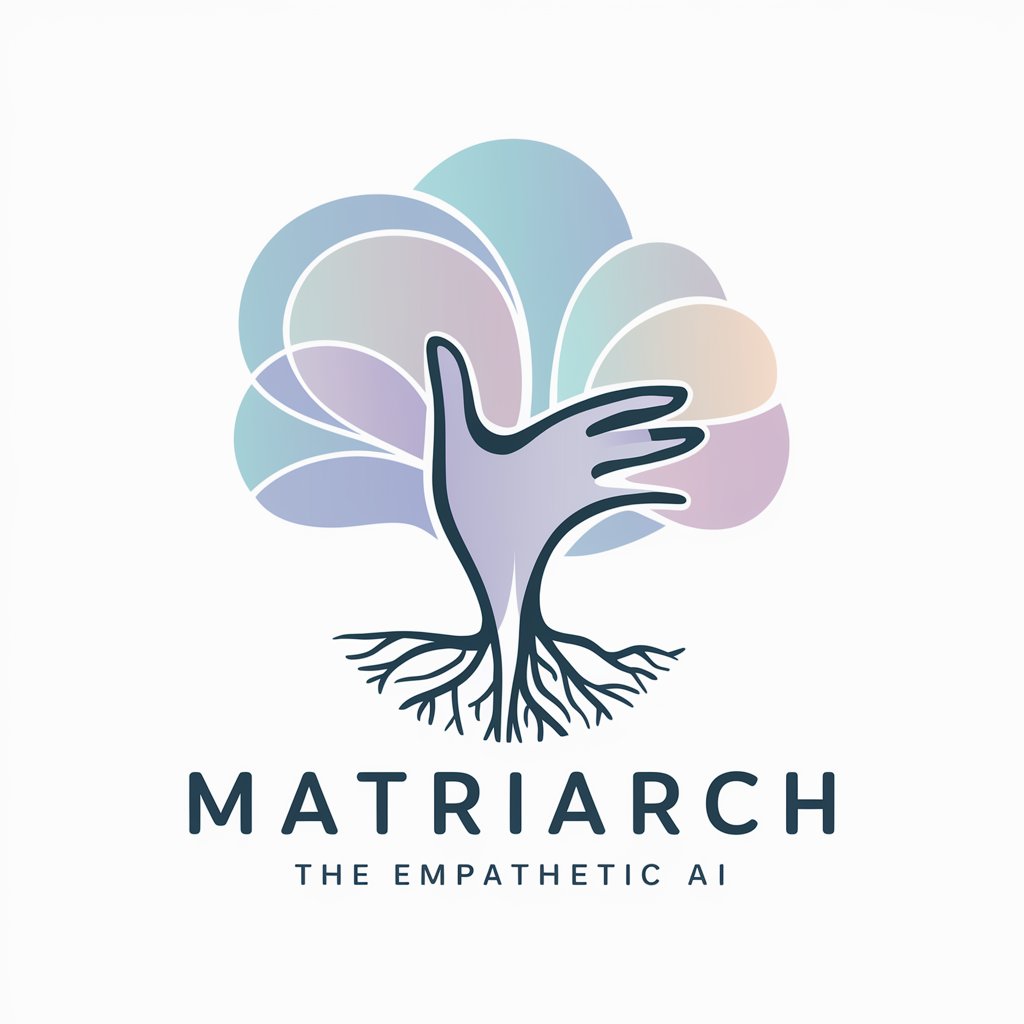Medical CAPS Notes - Efficient Medical Notetaking

Welcome to Medical CAPS Notes, your efficient EMR documentation assistant.
Streamline Medical Records with AI
Summarize the patient's main concern:
List the final diagnoses:
Outline the management plan:
Detail the patient's history and examination findings:
Get Embed Code
Overview of Medical CAPS Notes
Medical CAPS Notes is a structured documentation approach designed to optimize the usability and efficiency of electronic medical records (EMR). Unlike the traditional SOAP (Subjective, Objective, Assessment, Plan) format, CAPS prioritizes the most critical information at the beginning of medical notes. The acronym CAPS stands for Concern, Assessment, Plan, and Supplemental Information. This format is specifically tailored to enhance the clarity and accessibility of patient information for healthcare providers. By placing the Assessment and Plan sections at the forefront, CAPS ensures immediate visibility of the patient's diagnosis and management strategy. The Supplemental Information section contains detailed narratives, including history, physical examination findings, and results of investigations, providing a comprehensive context for the patient's care. For example, in a CAPS note for a patient presenting with chest pain, the Concern would briefly state 'chest pain of 2 hours duration', the Assessment might list 'acute coronary syndrome', and the Plan would outline the immediate management strategies, with the Supplemental Information detailing the patient's medical history, physical exam findings, and lab results. Powered by ChatGPT-4o。

Core Functions of Medical CAPS Notes
Streamlining Information Presentation
Example
A CAPS note for a diabetic patient includes an upfront assessment indicating poorly controlled diabetes and a plan outlining adjustments in insulin therapy, directly followed by the patient's detailed medical history and recent glucose monitoring results in the Supplemental Information.
Scenario
This function is particularly useful in busy clinical settings, allowing healthcare providers to quickly grasp the patient's current status and planned interventions without wading through extensive background information.
Enhancing Patient Care Continuity
Example
In a multi-specialist clinic, a CAPS note on a patient with heart failure might detail the assessment of exacerbation risk and a plan for adjusting diuretics, ensuring that each specialist can immediately see and build upon the current management strategy.
Scenario
This function fosters a seamless transition of care between different specialists and healthcare teams, ensuring that all are aligned on the patient's treatment plan.
Facilitating Quick Reference and Decision Making
Example
An emergency department CAPS note for an asthma attack presents a clear assessment of respiratory distress and a plan for nebulized therapy, with detailed accounts of previous attacks and treatments listed in Supplemental Information for reference as needed.
Scenario
This is crucial in acute care settings where time-sensitive decisions are made, allowing clinicians to quickly reference the most pertinent information while having access to detailed data if required.
Ideal Users of Medical CAPS Notes
Healthcare Providers
Physicians, nurses, and allied health professionals in both primary care and specialized settings are ideal users. They benefit from the streamlined note format, which enhances clinical decision-making and patient care coordination.
Medical Administrators
Healthcare administrators and clinical documentation specialists who are tasked with maintaining high-quality, efficient medical records systems will find CAPS notes invaluable for ensuring that EMR content is both accessible and clinically relevant.
Health Information Technologists
Professionals involved in the design, implementation, and optimization of EMR systems are key users. They can leverage the CAPS format to develop more intuitive and user-friendly documentation tools that support clinical workflows.

How to Use Medical CAPS Notes
Start Your Free Trial
Begin by accessing a free trial at yeschat.ai, no login or ChatGPT Plus subscription required.
Familiarize with CAPS Format
Understand the CAPS format: Concern, Assessment, Plan, Supplemental Information. This is crucial for effective note-taking.
Input Patient Details
Enter succinct details about the patient's concern, your assessment, and the management plan, followed by any supplemental information.
Review and Edit
Review the generated notes for accuracy and completeness. Edit as necessary to ensure clarity and conciseness.
Integrate with EMR
If available, integrate the tool with your Electronic Medical Record (EMR) system for streamlined documentation and access.
Try other advanced and practical GPTs
CAPS Lesson Planner
Streamlining CAPS Education with AI

CAPS InfoGPT
Empowering CAPS Professionals with AI

Medicus Caps
Elevate Your Professional Wear with AI

Capitalism Defender
Illuminating capitalism's complexities through AI.

Andrew - The Nomad Capitalist
Optimize Your Global Citizenship Journey with AI-Powered Advice

Capitalismo, socialismo y democracia
Explore the depths of economic theories with AI-powered insights.

Matriarch Chat
AI-powered expat tax guidance at your fingertips.

Matriarch
Empowering Personal Growth with AI

Acerbic Matriarch
Sharper insights, sterner words.

Scrum Companion
Streamlining Scrum with AI-Powered Efficiency

Scrum Coach
AI-Powered Scrum Mastery

Scrum Helper
Empowering Agile Teams with AI

FAQs about Medical CAPS Notes
What makes Medical CAPS Notes different from traditional SOAP notes?
Unlike SOAP notes, CAPS notes prioritize the most critical information upfront - Concern, Assessment, and Plan - ensuring quick access and readability in EMR systems, while still providing detailed supplemental information as needed.
Can Medical CAPS Notes integrate with all EMR systems?
Integration capabilities can vary depending on the EMR system. It's advisable to check with your EMR provider about compatibility with CAPS note-taking tools.
Are Medical CAPS Notes suitable for all medical specialties?
Yes, CAPS notes are designed to be adaptable across various medical specialties, offering a structured yet flexible format for patient documentation.
How can Medical CAPS Notes improve patient care?
By ensuring crucial information is immediately visible and accessible, Medical CAPS Notes can enhance the efficiency of patient management and care coordination among healthcare providers.
What are the best practices for creating effective CAPS notes?
Best practices include being concise yet comprehensive, prioritizing critical information, using bullet points for clarity, and regularly reviewing notes for accuracy and completeness.
